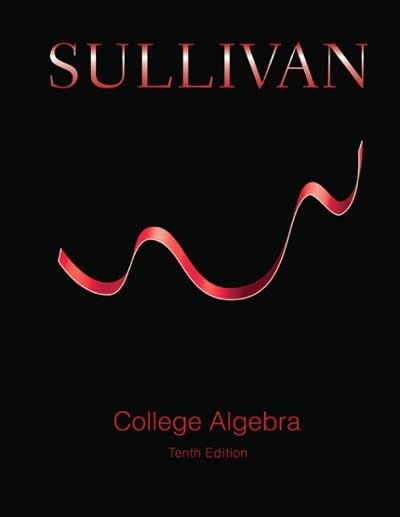Question
3. Purchasing Survey asked purchasing professionals what sales traits impressed them most in a sales representative. Seventy-eight percent selected thoroughness. Forty percent responded, knowledge of
3. Purchasing Survey asked purchasing professionals what sales traits impressed them most in a sales representative. Seventy-eight percent selected "thoroughness." Forty percent responded, "knowledge of your own product." The purchasing professionals were allowed to list more than one trait. Suppose 27% of the purchasing professionals listed both "thoroughness" and "knowledge of your own product" as sales traits that impressed them most. A purchasing professional is randomly sampled. a. What is the probability that the professional selected "thoroughness" or "knowledge of your own product"? b. What is the probability that the professional selected neither "thoroughness" nor "knowledge of your own product"? c. If it is known that the professional selected "thoroughness," what is the probability that the professional selected "knowledge of your own product"? d. What is the probability that the professional did not select "thoroughness" and did select "knowledge of your own product"?
7. A few years ago, a survey commissioned by The World Almanac and Maturity News Service reported that 51% of the respondents did not believe the Social Security System will be secure in 20 years. Of the respondents who were age 45 or older, 70% believed the system will be secure in 20 years. Of the people surveyed, 57% were under age 45. One respondent is selected randomly. a. What is the probability that the person is age 45 or older? b. What is the probability that the person is younger than age 45 and believes that the Social Security System will be secure in 20 years? c. If the person selected believes that Social Security System will be secure in 20 years, what is the probability that the person is 45 years old or older? d. What is the probability that the person is younger than age 45 or believes the Social Security System will not be secure in 20 years?
9. The Steelcase Workplace Index studied the types of work-related activities that Americans did while on vacation in the summer. Among other things, 40% read work-related material. Thirty-four percent checked in with the boss. Respondents to the study were allowed to select more than one activity. Suppose that of those who read work-related material, 78% checked in with the boss. One of these survey respondents is selected randomly. a. What is the probability that while on vacation this respondent checked in with the boss and read work-related material? b. What is the probability that while on vacation this respondent neither checked in with the boss nor read work-related material? c. What is the probability that while on vacation this respondent read work-related material given that the respondent checked in with the boss? d. What is the probability that while on vacation this respondent did not check in with the boss given that the respondent read work-related material? e. What is the probability that while on vacation this respondent did not check in with the boss given that the respondent did not read work-related material? f. Construct a joint probability table for this problem.
10. A study on ethics in the workplace by the Ethics Resource Center and Kronos, Inc., revealed that 35% of employees admit to keeping quiet when they see coworker misconduct. Suppose that 80% of employees who admit to keeping quiet when they see coworker misconduct call in sick when they are well. In addition, suppose that 38% of employees who call in sick when they are well admitted to keeping quiet when they see coworker misconduct. If an employee is randomly selected, determine the following probabilities: a. The employee calls in sick when well and admits to keeping quiet when seeing coworker misconduct. b. The employee admits to keeping quiet when seeing coworker misconduct or calls in sick when well. c. Given that the employee calls in sick when well, he or she does not keep quiet when seeing coworker misconduct. d. The employee neither keeps quiet when seeing coworker misconduct nor calls in sick when well. e. The employee admits to keeping quiet when seeing coworker misconduct and does not call in sick when well.
Step by Step Solution
There are 3 Steps involved in it
Step: 1

Get Instant Access to Expert-Tailored Solutions
See step-by-step solutions with expert insights and AI powered tools for academic success
Step: 2

Step: 3

Ace Your Homework with AI
Get the answers you need in no time with our AI-driven, step-by-step assistance
Get Started


